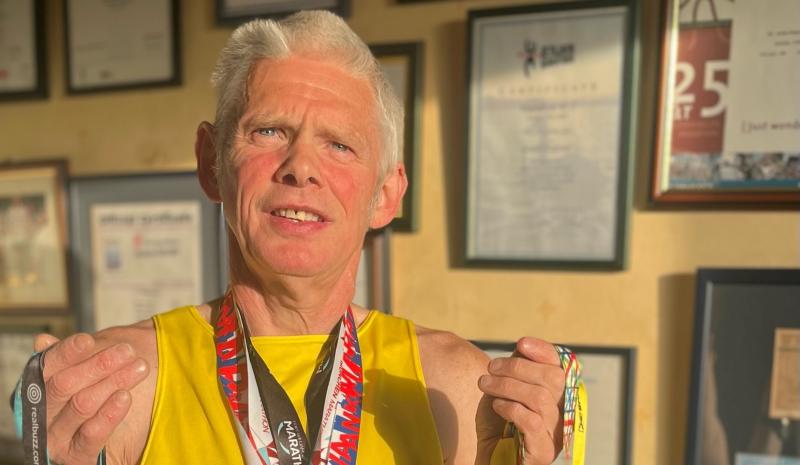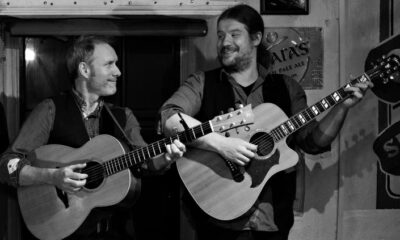News
New index to measure air quality in Galway

A new index which calculates and updates the air quality in Galway every hour is expected to become a valuable resource for asthmatics and people who suffer from respiratory and cardiovascular diseases.
The Air Quality Index for Health (AQIH), launched by the Environmental Protection Agency (EPA) this week, allows members of the public to check on the quality of air in the city and obtain advice in relation to its impact on their lives.
It provides a coloured scale, divided into four bands from ‘good’ to ‘very poor’, along with health advice for both at-risk groups and the general population.
The index was developed in conjunction with the Health Service Executive, Met Éireann and the Department of the Environment, Community and Local Government. You can see the current readings at www.airquality.epa.ie.
By zooming in on Galway on a map of Ireland, a user of the site can check out the AQIH which can change considerably over the course of a day as well as obtaining advice on what to do when the reading is poor.
“Air quality can vary from town to town, day to day and even hour to hour. The Air Quality Index for Health allows people in Galway to keep informed about air quality in their town or area and its impact on their health and that of their family,” said EPA Manager Barbra O’Leary.
“The access to up to date and correct information on air quality is important to everyone, but especially for anyone suffering from respiratory and cardiovascular diseases who are more likely to be at risk from air pollution.”
People at risk are advised to check the index before engaging in any strenuous outdoor activities such as sports.
Clean air is seen as having a huge importance in determining a population’s health and reducing the burden of chronic disease.
While air quality in Ireland is amongst the best in Europe, the levels of some pollutants remain a cause for concern, particularly those produced by traffic in some urban centres.
Domestic solid fuel use is the other main source of concern, especially in areas where the sale of bituminous coal is permitted.
Ms O’Leary said Irish people were lucky to have relatively good levels of air quality and there was never a need to take extreme precautions, such as staying indoors, which were necessary in other parts of the world.
Connacht Tribune
West has lower cancer survival rates than rest

Significant state investment is required to address ‘shocking’ inequalities that leave cancer patients in the West at greater risk of succumbing to the disease.
A meeting of Regional Health Forum West heard that survival rates for breast, lung and colorectal cancers than the national average, and with the most deprived quintile of the population, the West’s residents faced poorer outcomes from a cancer diagnosis.
For breast cancer patients, the five-year survival rate was 80% in the West versus 85% nationally; for lung cancer patients it was 16.7% in the west against a 19.5% national survival rate; and in the West’s colorectal cancer patients, there was a 62.6% survival rate where the national average was 63.1%.
These startling statistics were provided in answer to a question from Ballinasloe-based Cllr Evelyn Parsons (Ind) who said it was yet another reminder that cancer treatment infrastructure in the West was in dire need of improvement.
“The situation is pretty stark. In the Western Regional Health Forum area, we have the highest incidence of deprivation and the highest health inequalities because of that – we have the highest incidences of cancer nationally because of that,” said Cllr Parsons, who is also a general practitioner.
In details provided by CEO of Saolta Health Care Group, which operates Galway’s hospitals, it was stated that a number of factors were impacting on patient outcomes.
Get the full story in this week’s Connacht Tribune, on sale in shops now, or you can download the digital edition from www.connachttribune.ie. You can also download our Connacht Tribune App from Apple’s App Store or get the Android Version from Google Play.
Connacht Tribune
Marathon Man plans to call a halt – but not before he hits 160 races

On the eve of completing his 150th marathon, an odyssey that has taken him across 53 countries, Loughrea’s Marathon Man has announced that he is planning to hang up his running shoes.
But not before Jarlath Fitzgerald completes another ten races, making it 160 marathons on the occasion of his 60th birthday.
“I want to draw the line in 2026. I turn 57 in October and when I reach 60 it’s the finishing line. The longer races are taking it out of me. I did 20 miles there two weeks ago and didn’t feel good. It’s getting harder,” he reveals.
“I’ve arthritis in both hips and there’s wear and tear in the knees.”
We speak as he is about to head out for a run before his shift in Supervalu Loughrea. Despite his physical complaints, he still clocks up 30 miles every second week and generally runs four days a week.
Jarlath receives injections to his left hip to keep the pain at bay while running on the road.
To give his joints a break, during the winter he runs cross country and often does a five-mile trek around Kylebrack Wood.
He is planning on running his 150th marathon in Cork on June 4, where a group of 20 made up of work colleagues, friends and running mates from Loughrea Athletics Club will join him.
Some are doing the 10k, others are doing the half marathon, but all will be there on the finishing line to cheer him on in the phenomenal achievement.
Get the full story in this week’s Connacht Tribune, on sale in shops now, or you can download the digital edition from www.connachttribune.ie. You can also download our Connacht Tribune App from Apple’s App Store or get the Android Version from Google Play.
CITY TRIBUNE
Galway ‘masterplan’ needed to tackle housing and transport crises

From the Galway City Tribune – An impassioned plea for a ‘masterplan’ that would guide Galway City into the future has been made in the Dáil. Galway West TD Catherine Connolly stated this week that there needed to be an all-inclusive approach with “vision and leadership” in order to build a sustainable city.
Deputy Connolly spoke at length at the crisis surrounding traffic and housing in Galway city and said that not all of the blame could be laid at the door of the local authority.
She said that her preference would be the provision of light rail as the main form of public transport, but that this would have to be driven by the government.
“I sat on the local council for 17 years and despaired at all of the solutions going down one road, metaphorically and literally. In 2005 we put Park & Ride into the development plan, but that has not been rolled out. A 2016 transport strategy was outdated at the time and still has not been updated.
“Due to the housing crisis in the city, a task force was set up in 2019. Not a single report or analysis has been published on the cause of the crisis,” added Deputy Connolly.
She then referred to a report from the Land Development Agency (LDA) that identified lands suitable for the provision of housing. But she said that two-thirds of these had significant problems and a large portion was in Merlin Park University Hospital which, she said, would never have housing built on it.
In response, Minister Simon Harris spoke of the continuing job investment in the city and also in higher education, which is his portfolio.
But turning his attention to traffic congestion, he accepted that there were “real issues” when it came to transport, mobility and accessibility around Galway.
“We share the view that we need a Park & Ride facility and I understand there are also Bus Connects plans.
“I also suggest that the City Council reflect on her comments. I am proud to be in a Government that is providing unparalleled levels of investment to local authorities and unparalleled opportunities for local authorities to draw down,” he said.
Then Minister Harris referred to the controversial Galway City Outer Ring Road which he said was “struck down by An Bord Pleanála”, despite a lot of energy having been put into that project.
However, Deputy Connolly picked up on this and pointed out that An Bord Pleanála did not say ‘No’ to the ring road.
“The High Court said ‘No’ to the ring road because An Bord Pleanála acknowledged it failed utterly to consider climate change and our climate change obligations.
“That tells us something about An Bord Pleanála and the management that submitted such a plan.”
In the end, Minister Harris agreed that there needed to be a masterplan for Galway City.
“I suggest it is for the local authority to come up with a vision and then work with the Government to try to fund and implement that.”















